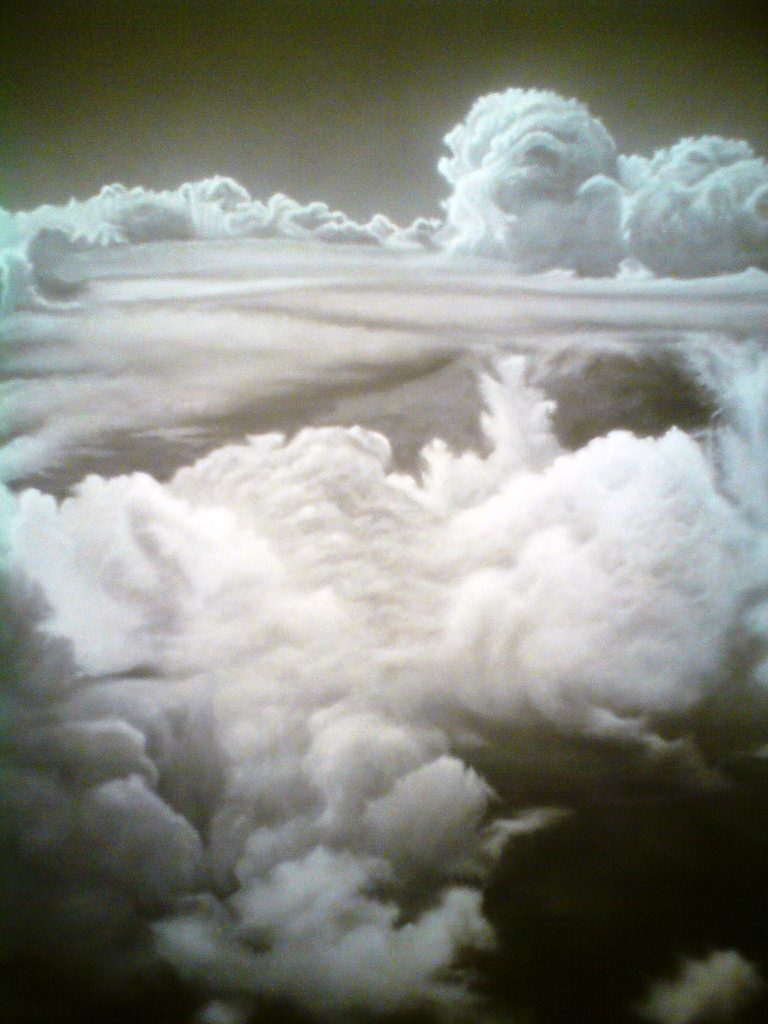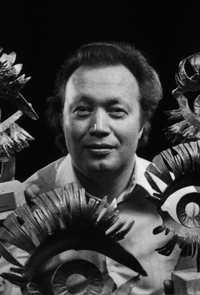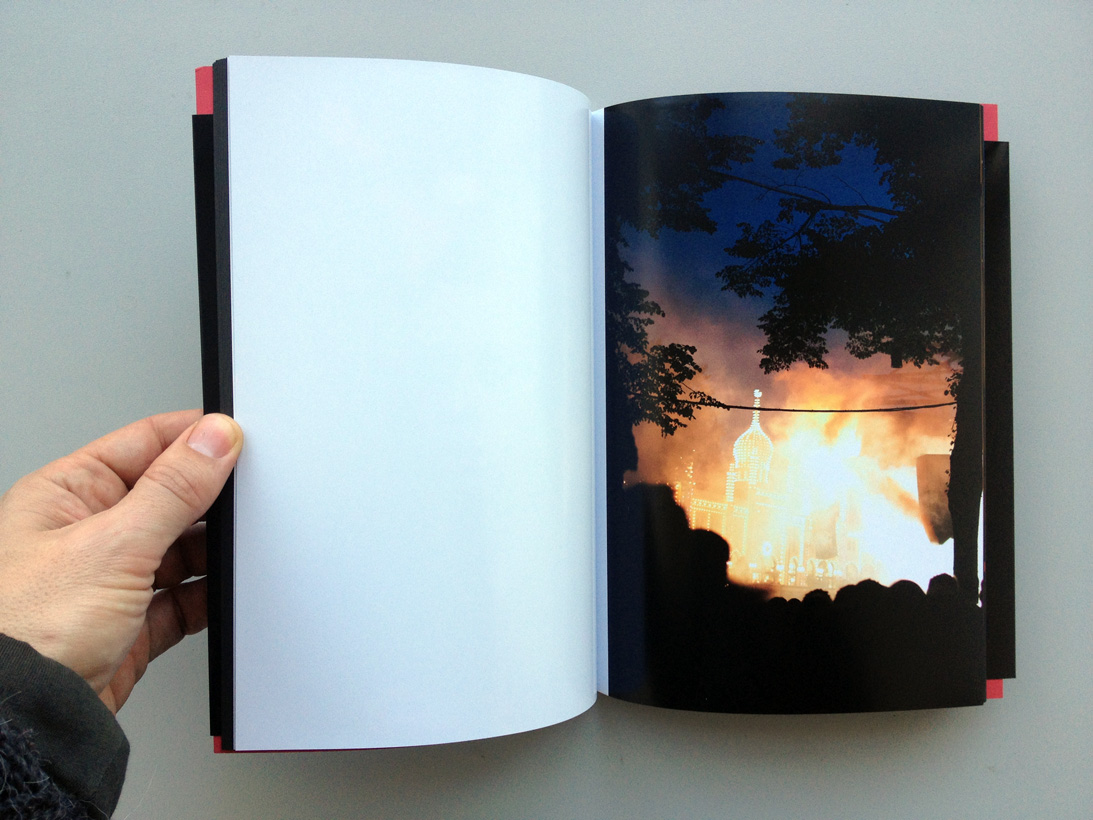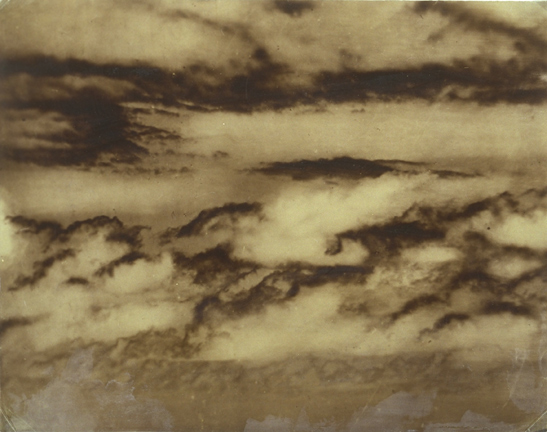A Tale of Three Piers aired on Radio 4’s Open Country last week.
Helen Mark takes a day at the seaside to visit the romance of piers. They have been hailed as great examples of Victorian architecture but the cost of maintenance and repair from weather damage or fire can run into millions. She visits Weston-super-Mare in Somerset where the now hi-tech restored Grand Pier overlooks the damaged remains of Birnbeck. Actors Timothy West and Prunella Scales join her in Clevedon to visit the ‘pier of the year’ which was once only a vote away from demolition. It was described by Sir John Betjeman as ‘delicate as a Japanese print in the mist’ but it may have a fragile future. They welcome the paddle steamer Waverley as it docks – revisiting memories of Timothy’s childhood holidays.
Produced in Bristol by Anne-Marie Bullock
Listen again here.
 Image: Print from Keith Tyson”s Cloud Choreography
Image: Print from Keith Tyson”s Cloud Choreography
Keith Tyson won the Turner Prize in 2002, with an exhibition of humming machines and large-scale paintings dissecting the mysteries of the universe. In 2009 he invited Tate into his studio on the south coast of England, where new work was being prepared for an exhibition at Parasol Unit, London. Amongst them Alle diese kostenlosen Casino Spiele auf unserer Seite wurden von den Providern der Spiele entwickelt, um sofort in dem Browser geladen zu werden ohne die Notwendigkeit, weitere Software herunter zu laden. are his ‘Cloud Choreography’ paintings, which explore imagery ranging from the cloud of milk in your coffee to the vapour from an atomic bomb. He also talks about his alchemic ‘Nature Paintings’ which are the result of a chemical reaction; each composition unique and unpredictable. Finally, we take a stroll on the beach to muse on the sources of Keith’s inspiration.
You can watch a video here.
Photo: Esa Naseem with his banner © Bradford Telegraph & Argus
Dear Chancellor, please consider the impact of the comprehensive spending review on 26th June 2013 on the National Media Museum in Bradford. Further government cuts to the Science Museum Group’s annual funding will most likely result in the closure of the National Media Museum. This loss will be a devastating blow to the City of Bradford and a tragic outcome on an international scale.
Please sign the online petition here.
Why is this important?
The forthcoming government cuts to the Science Museum Group’s (SMG) annual funding will have a massive impact on the daily running of four of the UK’s most visited Museums. Led by the Science Museum in London, the SMG also includes the National Railway Museum in York, the Museum of Science and Industry in Manchester and the National Media Museum in Bradford.
Ian Blatchford, Director of the Science Museum Group has stated that a further 10% cut in funding in the next round of government spending proposals meant “almost certainly” one museum would shut. Out of the four Museums the National Media Museum in Bradford has the least visitors annually and is the most at risk to closure.
Read an article by Alexandra Jones ‘I found my inspiration in Bradford, but future students might not be so lucky’ on the Guardian: http://www.guardian.co.uk/commentisfree/2013/jun/07/bradford-national-media-museum
BBC News – Science Museum Group says cuts put museums at risk: http://www.bbc.co.uk/news/uk-england-22781573
Revealing interview with Ian Blatchford on Radio 4’s The World at One: http://audioboo.fm/boos/1433319-science-museum-director-ian-blatchford-on-the-world-at-one-bbc-radio-4
“There’s no such thing as Flickr Pro today because [with so many people taking photographs] there’s really no such thing as professional photographers anymore,” declared Yahoo CEO Marissa Mayer today. Read more here.
The work of Sergei Vasiliev currently on show at the Saatchi Gallery as part of their group show ‘GAIETY IS THE MOST OUTSTANDING FEATURE OF THE SOVIET UNION’.
Sergei Vasiliev was born in 1937 in Chelyabinsk, Russia. After graduating from the MVD Academy, Moscow, he became a staff photographer for the newspaper ‘Vecherny Chelyabinsk’, where he has worked for the past thirty years. he has received many honours including International Master of Press Photography from the International Organization of Photo Journalists (Prague, 1985), Honoured Worker of Arts of Russia, and the Golden Eye Prize. His work has been exhibited internationally and is held in numerous museums’ collections. He is author of more than twenty books, including ‘Russian Beauty’, (1996) and ‘Zonen’, (1994).

FUEL Design published the Russian Criminal Tattoo Encyclopedia in three volumes in 2003, 2006 and 2008 respectively. The books are part of the permanent collection of the Design Museum, London.
The exhibition runs until 9 June 2013.
See more about the exhibition here: http://www.saatchigallery.com/artists/russian_tattoo.htm?section_name=new_art_from_russia
http://blythvideo.com/
BLYTH is a Hi-8 video about a myth of transcendence. Retrogressing to a time of foolhearted optimism nurtured by an aspirational government, BLYTH is gently satirical and obliquely humorous in its parodying of another new era we were apparently swaggering into.
With Northern Britain finding itself at the mercy of a new age of austerity, BLYTH reminds us of an optimism now consigned to a recent past, and represented here in a haze of video noise. This is a comment on the fluctuating identities of those living in post-industrial regions, with the advantages of current hindsight serving to contextualise a perhaps careless, over optimistic decade sometime previous.
Through it’s soundscapes, locations, and dialogue, BLYTH exhibits film making of an ambient approach, whilst showing a vision of Englishness that sits outside the status quo. The video is ponderous, atmospheric, and resonating with a social commentary akin to the works of Owen Hatherley, Michael Smith, Simon Roberts and Martin Parr. This is a peripheral England, shown in a way that adheres to that great British tradition of satire.
Read an interview here-
http://richardpowellsmith.tumblr.com/post/49502774290/a-few-weeks-ago-i-sat-down-with-my-friend-lewis
Good to know that Lucy, today’s Page 3 girl in The Sun newspaper, is so concerned about uncollected council taxes.
Read the full story here.
New on the studio shelf – Birgitta Lund’s mesmerizing publication ‘The Garden published by Space Poetry (Denmark).
The Garden is a contemporary photographic tale that uses Tivoli Gardens, an old amusement park in the middle of Copenhagen Denmark as an allegory. Here people of all different nationalities and ethnicities meet in a world of fantasy. An imaginary Orient with fake palaces and minarets is the backdrop of the place. It’s a surreal world, yet it mirrors the dreams and fears of life outside the entrance.
“When I started the project I lived very close to Tivoli and often came there at night. I started to see Tivoli and the people visiting the place as an allegory. There was to me an unnerving, surreal similarity between the images of war & conflict flickering on my screen at home, and Tivoli’s imaginary Orient, flashing light, and the seduced gaze of the visitors”, says Birgitta Lund.
You can read a review on Buffet website here and photographs on Time’s Lightbox here.

